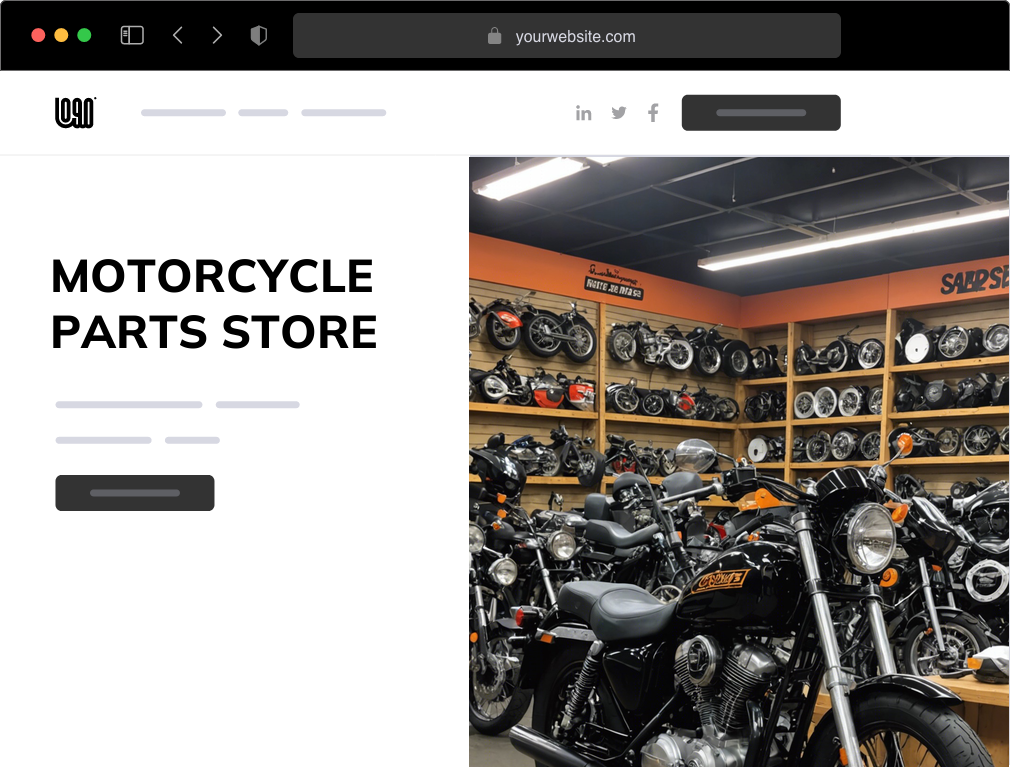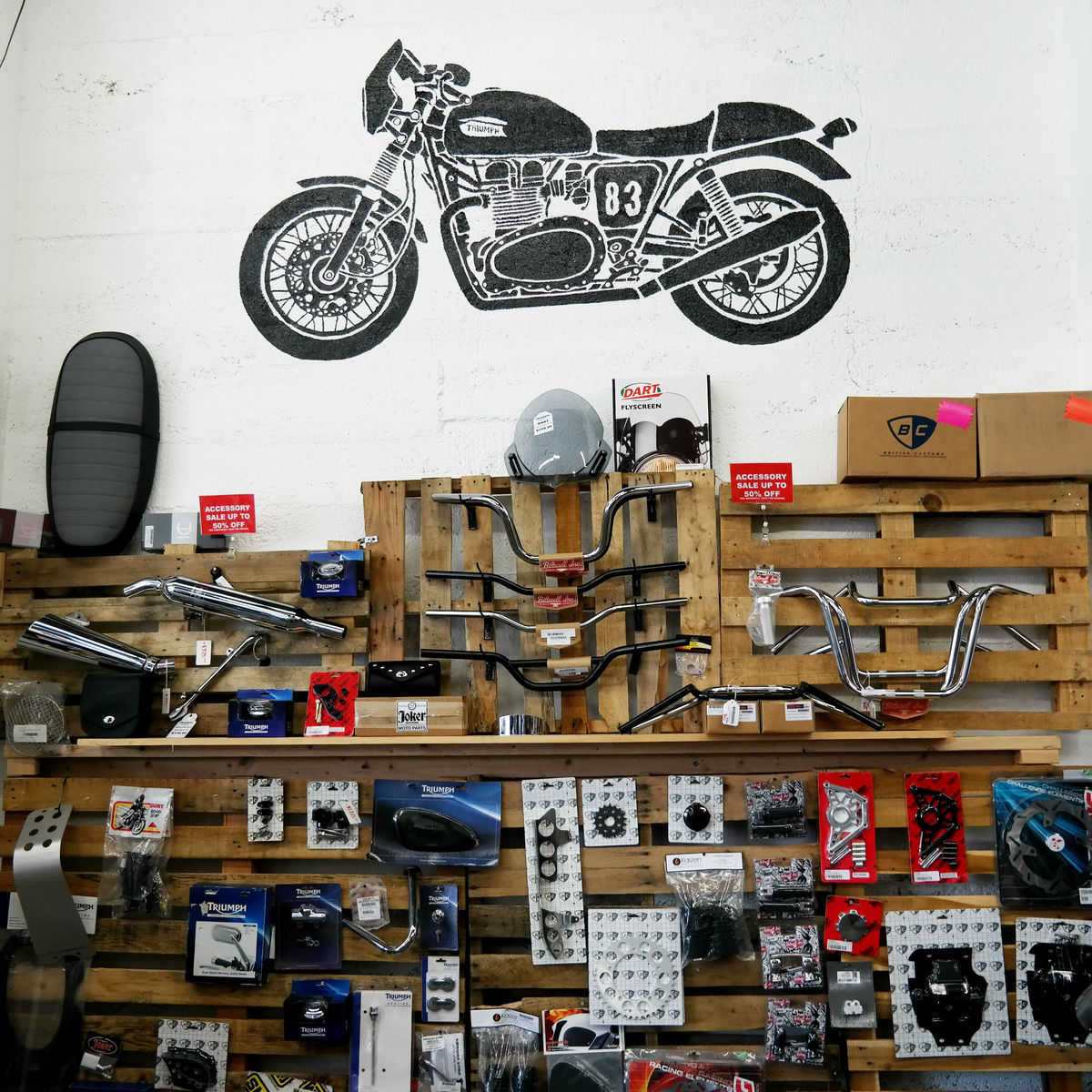Recognizing the Crucial Parts of a Motorbike: A Comprehensive Overview for Enthusiasts
For motorbike fanatics looking to elevate their riding experience and ensure their bikes run efficiently, recognizing the essential parts of a bike is paramount. Each aspect, from the engine's elaborate operations to the essential function of the braking devices, not only influences efficiency however additionally safety and security and convenience.
Engine Parts

The camshaft plays an essential duty in managing the timing of the engine's shutoffs, guaranteeing the specific opening and closing required for reliable fuel and air consumption, as well as exhaust expulsion. This timing is important to maintaining ideal engine efficiency and efficiency. Furthermore, the carburetor or gas injection system, relying on the motorcycle design, is in charge of mixing air with gas in the appropriate ratio for combustion.
The air conditioning system, either air or liquid-based, functions to preserve the engine's temperature level within functional limits, protecting against overheating and making certain longevity - motocross gear. Each part, diligently developed and incorporated, adds to the smooth procedure of the engine, defining the bike's power outcome and total efficiency
Transmission System
Essential to the motorbike's performance, the transmission system makes sure effective power transfer from the engine to the wheels. This system consists of numerous critical components, including the clutch, gearbox, and final drive, each playing an important function in equating the engine's power into activity. The clutch, commonly run by a hand bar, offers to involve and disengage the engine from the transmission, enabling smooth equipment adjustments and regulated velocity.
The gearbox, commonly described as the transmission appropriate, consists of a set of gears that bikers can manually move through to adjust the bike's rate and torque result. These equipments are set up in a sequence that enables the bike to increase efficiently and preserve optimal engine efficiency throughout different speeds. Most bikes make use of a consecutive gearbox, requiring the rider to change equipments in a fixed order.
Braking Systems
While understanding the transmission system is key to utilizing a bike's power, just as crucial is the capacity to control and quit that power properly, which is where braking mechanisms enter into play. Brakes are crucial for safety and security and performance, providing the motorcyclist with the required control to navigate numerous terrains and problems. Typically, motorcycles include two kinds of braking systems: disc brakes and drum brakes.
Disc brakes are much more widespread in modern motorbikes due to their exceptional efficiency. This system offers far better heat dissipation, regular performance, and improved quiting power, particularly in wet conditions.
Alternatively, drum brakes, though less typical, are still found in some bikes. They work by pressing brake footwear against the inner surface of a drum connected to the wheel. While normally less reliable in warmth dissipation and quiting power, drum brakes are simpler and much more cost-efficient.
Comprehending these braking systems' nuances allows riders to maintain their motorcycles appropriately and value the design that makes certain secure and efficient stopping.
Suspension and Guiding
Suspension and guiding systems are vital components that considerably influence a motorbike's handling and trip comfort. The suspension system, being composed of forks at the front and shock absorbers at the rear, takes in roadway irregularities, improving stability and control. Front forks, normally telescopic or upside down, compress and rebound to reduce effects, while rear shock absorbers keep tire call with the roadway, important for traction and safety.
Steering, focused around the handlebars, links the biker to the motorbike's directional control. The steering head bearings ensure smooth procedure, enabling exact maneuverability. Proper alignment and upkeep of these bearings are vital for foreseeable steering response and lowering cyclist tiredness.
The suspension's adjustability is one more vital facet; preload, damping, and rebound settings permit customization to suit different riding designs and problems. This versatility is vital for optimizing efficiency, whether navigating metropolitan streets or taking on tough routes. Advancements like electronic shock absorber provide real-time adjustments, boosting trip top quality across varied terrains.

Electrical Solutions
After ensuring a smooth and regulated trip via effective suspension and guiding systems, interest transforms to the electrical systems, a crucial facet of modern motorbikes. These systems play an important role not just in starting the engine yet also in powering numerous elements that boost the functionality and security of the motorbike.
At the heart of a motorcycle's electrical system is the battery, which shops electric energy required for beginning the engine and powering supporting systems - motorcycle parts nz. The generator or generator, paired with the rectifier-regulator, ensures the battery remains charged see post while the motorbike is in procedure, transforming mechanical power right into electric energy and keeping voltage degrees
The check over here ignition system, another critical element, is responsible for stiring up the air-fuel combination in the engine's cyndrical tubes. Modern motorcycles frequently use a digital ignition system, using better performance and integrity contrasted to typical systems.
Lights systems, consisting of fronts lights, tail lights, and indications, are additionally essential, making certain presence and safety and security for the cyclist. Added digital elements such as sensing units, control devices, and shows add to sophisticated features like fuel shot administration, anti-lock braking systems (ABDOMINAL), and digital control panels, better improving the riding experience.
Verdict
A thorough understanding of a motorbike's essential parts, including the engine, transmission system, braking devices, suspension, steering, and electric systems, is important for enthusiasts intending to optimize safety, efficiency, and comfort. Proficiency of these components allows for notified choices relating to maintenance and upgrades, eventually boosting the riding experience. By integrating this understanding, riders can ensure their bikes operate at peak effectiveness and integrity, thereby maximizing both pleasure and long life of their vehicles.
For motorbike lovers looking to boost their riding experience and ensure their bikes run smoothly, comprehending the essential elements weblink of a motorbike is extremely important.Integral to the motorbike's performance, the transmission system makes certain efficient power transfer from the engine to the wheels.While understanding the transmission system is crucial to using a bike's power, equally important is the capability to manage and quit that power successfully, which is where stopping devices come right into play. Generally, motorcycles feature two types of braking systems: disc brakes and drum brakes.
A detailed understanding of a bike's important components, including the engine, transmission system, braking systems, suspension, steering, and electrical systems, is essential for enthusiasts aiming to optimize efficiency, convenience, and safety and security.